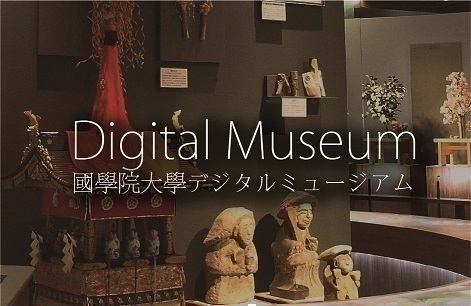- トップ
- Encyclopedia of Shinto
- Ritsuryō Jingikan
Encyclopedia of Shinto
| Main Menu: | |
| Links: |
詳細表示 (Complete Article)
| カテゴリー1: | 3. Institutions and Administrative Practices |
|---|---|
| カテゴリー2: | Ancient |
| Title | Ritsuryō Jingikan |
| Text | The Jingikan was the ritsuryō office in charge of the administration of kami worship. It was one of the ritsuryō government's two councils and eight ministries. The general responsibilities of the Jingikan included the performance of rites for the tenjin chigi ("celestial and terrestrial deities") and oversight of provincial shrines. The latter duty entailed maintaining rosters of hafuribe (shrine ritualists) and registries of kanbe ("shrine sustenance households"). The Jingikan was staffed by four levels of managers: a director (kami, junior fourth rank lower grade, also called haku); senior and junior vice-directors (suke; the daifuku, junior fifth rank lower grade, and shōfuku, senior sixth rank upper grade); senior and junior assistants (jō: the daijō, junior sixth rank upper grade, and shōjō, junior sixth rank lower grade); senior and junior secretaries (sakan: the daisakan, senior eighth rank lower grade, and shōsakan, junior eighth grade upper grade). Serving under these officials were hereditary religious functionaries (tomobe): thirty kanbe and twenty urabe. There were also thirty servants, called shibu, who performed miscellaneous duties, and two laborers, called jikichō. Later on, the positions of scribe (shishō) and coordinator, kashō, were added. Formally, along with the Daijōkan (Council of State, also called Dajōkan), the Jingikan was one of the two supreme organs of ritsuryō government. But in reality the Jingikan was subordinate to the Daijōkan. The Daijōkan was not only much larger in size, its officers also held higher ranks than did their counterparts in the Jingikan. For instance, the prime minister (daijō daijin), the top leader of the Daijōkan, held the first rank, and the ministers of right and left held the second rank. In comparison, the director of the Jingikan only held the junior fourth rank lower grade. Even the heads of the eight ministries subordinate to the Daijōkan, such as the Ministry of Residential Palace Affairs (Nakatsukasashō) and the Ministry of Personnel and Ceremonials (Shikibushō), held the senior fourth rank. Ryō shaku, a late Nara commentary on the administrative codes (ryō), placed the Jingikan under the jurisdiction of the Benkan, the Board of Controllers, which coordinated the eight ministries of the Daijōkan. The most significant duty of the Jingikan was to carry out the thirteen kinds of annual rites stipulated in Jingiryō (Laws on Deities). These festivals are: kinensai (Prayers for the Year Ceremony), chinkasai (Pacifying the Flowers Ceremony), kanmisosai (Deity Raiment Ceremony), ōimisai (a ceremony for Hirose Shrine), saigusasai (a ceremony for the Ōmiwa Shrine), fūjinsai (Wind Deity Ceremony), tsukinamisai (a semi-annual rite for various deities), chinkasai (Pacification of Fire Ceremony), michiaesai (Ceremony of the Four Corners of the Capital), kannamesai (Ceremony for the Divine Tasting of the Fruits), ainamesai (Sharing of the Fruits Ceremony), chinkonsai (Ceremony for the Pacification of the August Spirits), daijōsai (Great Tasting of the Fruits Ceremony). Among these, kanmisosai, ōimisai, and fūjinsai were performed twice a year in the summer and fall; while tsukinamisai, chinkasai, and michiaesai were observed in the summer and winter. These iterations brought the total number of rites performed each year to nineteen. In the late Heian period the chief posts in the Jingikan became hereditary. The Shirakawa Hakuō family inherited the directorship (haku, also called kami). The Fujinami (Iwade) family of the Ōnakatomi clan assumed the vice-directorship (daifuku), while the assistant vice-directors (gon no daifuku) were appointed from the Yoshida family of the Urabe clan. The precincts of the Jingikan burned down during the Ōnin War (1467-77). Shirakawa Tadatomiō and Yoshida Kanetomo attempted to rebuild them, but were not successful. During the Edo period, the main worship hall (saijōsho) of the Yoshida Shrine was used as a temporary Jingikan. At the beginning of the Meiji era, when the Daijōkan system was reinitiated, the Jingikan was also reestablished for a brief period, from 1868 to 1871. Prior to the establishment of the Jingikan in the ritsuryō system, there was an administrative organ called the Gūji, which is thought to have been identical with the Shinkan mentioned in Nihon shoki entries from the twelfth month of the second year (673), the ninth month of the fifth year, and the eleventh month of the sixth year of Tenmu's reign. All of these references to Shinkan appear in the context of the Niinamesai (Rite of Tasting New Fruits). We can assume that Tenmu Tennō vigorously supported the establishment of the Niinamesai, and that the office of Shinkan was responsible for conducting the rite. The relationship between the Shinkan and the jingi shizoku such as the Nakatomi and the Inbe deserves special attention. For instance, Nihon shoki entry for the second year of Tenmu's reign mentions "the Nakatomi, the Inbe, and the officers of the Shinkan... ," thereby indicating that the Nakatomi and the Inbe held high positions while the Shinkan was only in charge of the Niinamesai. At that stage, the Shinkan had not yet incorporated the Nakatomi and the Inbe as subordinate bureaucrats. The institution cannot be regarded as equal in status to "the six ministries" (ministries in charge of personnel, courtier affairs, popular affairs, the military, justice, and the treasury). The ritsuryō Jingikan was not actually established until enactment of the Asuka Kiyomihara Code in the sixth month of the third year of Jitō Tennō's reign (689). See also Jingiryō, Meiji Jingikan. — Takashio Hiroshi |




